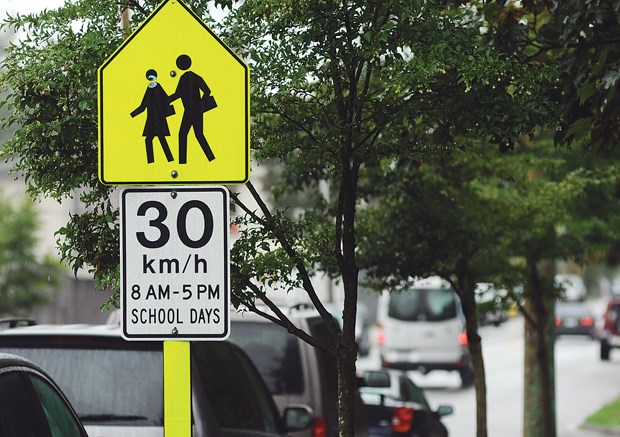Over 22,000 public school students on the North Shore head back to the classroom starting Tuesday where ideas about giving students more choices and ways to connect to the wider world are being given fresh emphasis under the new curriculum.
In West Vancouver, where about 7,000 students will head back to school, teachers and administrators got some inspiration on the school district’s traditional “opening day” Thursday, which included a talk by Natalie Panek, a young Canadian rocket scientist and aerospace engineer, about how her mentors and her willingness to explore helped shape her current career path.
Chris Kennedy, superintendent of the West Vancouver school district, said passions like those are already being fostered through programs like the robotics program.
This year there are already 50 students enrolled in the brand new robotics academy and more on the waiting list, he said. “That shows the influence of one passionate teacher (Todd Ablett),” said Kennedy. “He’s got the community excited about it.”
Parents have also been quick to embrace such initiatives and others like those teaching computer coding to elementary school students.
“They see that is the world outside of school,” said Kennedy. “It’s a good example of showing relevance in schools.”
This year, the trial phase of the new curriculum will also happen in the senior high school grades. That will likely mean less exam writing and more emphasis on projects, said Kennedy.
In North Vancouver, where about 15,000 students head back to school, there will be an increased emphasis on incorporating both outdoor learning and aboriginal culture into education. Already the school district has had a lot of interest in a new outdoor learning academy scheduled to launch next fall, said Mark Pearmain, superintendent of schools in North Vancouver.
Another area likely getting a reboot under the new provincial curriculum is the traditional report card. Some schools will pilot other ways of reporting, said Pearmain, such as using technology like the Fresh Grade app to share student progress with parents. Other schools will likely add to traditional report cards with a more in-depth three-way dialogue between parents, teachers and students, said Pearmain.
“There isn’t necessarily going to be a one size fits all,” he said. “Those will be opportunities for us to see: ‘How does it work?’”
In terms of major capital projects, Pearmain said the school district has been working with architects over the summer on basic design work for the new Argyle secondary, approved by the province at the end of the school year. A public meeting will be held on the project when work is further along, he said.
The school district is now hoping to get approval from the province on the next big project – a replacement of Handsworth.
Enrolment in both North Vancouver and West Vancouver school districts is expected to hold steady this year, or show a very slight increase.
That reflects a provincial trend of increased enrolment and includes families moving into the school districts, opting for public rather than private schools and students from off the North Shore choosing specific programs in the local school districts.
Pearmain said he’s looking forward to the new school year. “It’s a chance for renewal,” he said. “(Students) get to come back and reset the button and start fresh. It totally jazzes me up.”
According to statistics from the ministry of education, class sizes in North Vancouver are slightly higher than the provincial average. About 5 per cent of classes – 141 – in the last school year had more than 30 students in them.
In Grades 4 to 12, 183 classes included more than seven students with special needs.
About 1,030 teachers and administrators work in the North Vancouver school district, about 70 per cent of those full time. The average full-time salary for a teacher in North Vancouver is about $76,000, according to the ministry.
Average class sizes in West Vancouver are lower, but with numbers of students in intermediate and high school classes still above the provincial average.
A total of 36 classes at the primary grade level and 47 classes at the intermediate and secondary level included more than seven English Language Learners. About 14 per cent of students in West Vancouver are English Language Learners.



